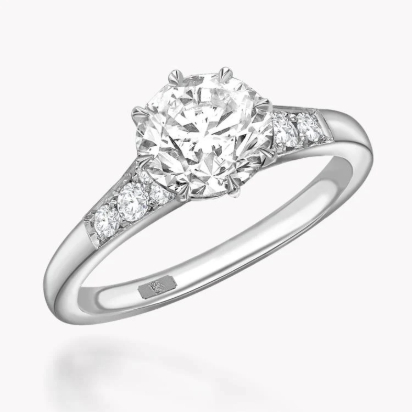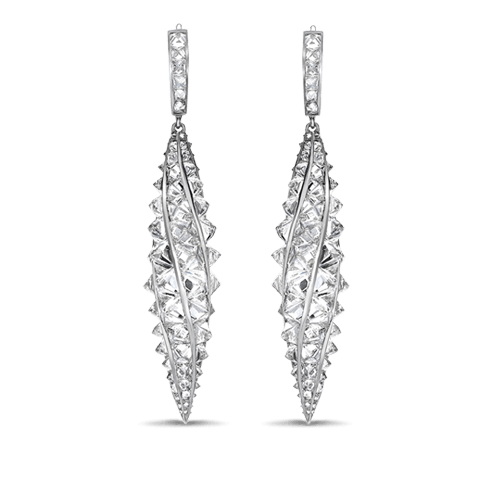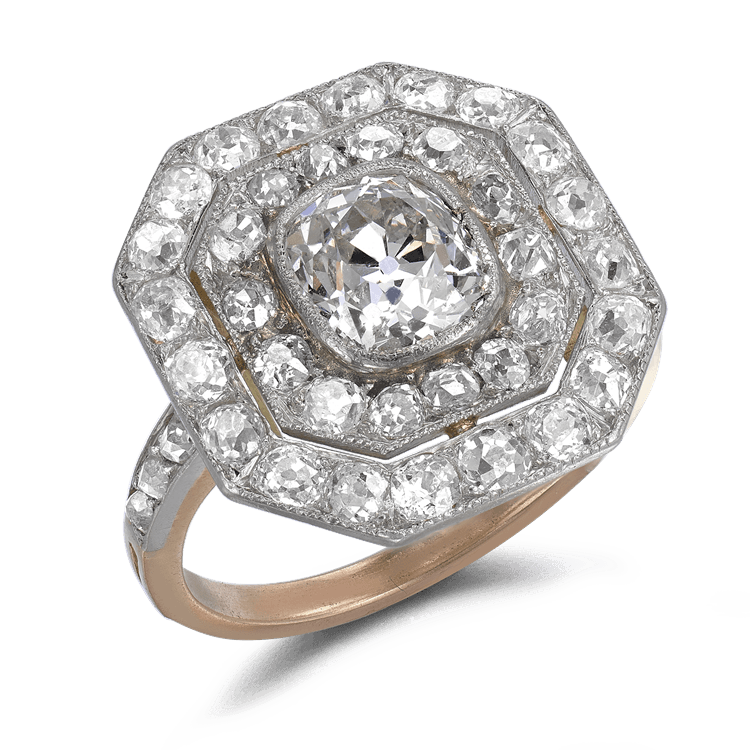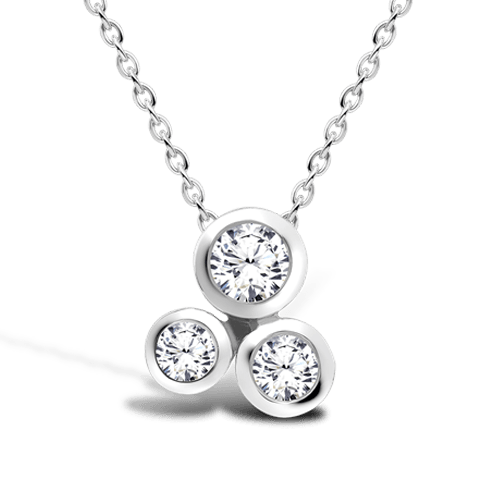The Diamond Colour Guide
Just as the cut is paramount among the 4Cs for diamond quality, diamond colour holds equal significance in shaping its brilliance and character. Much like the facets that dance with light, colour imbues each gem with a unique story.
In this guide, we'll explore the intricacies of diamond colour, its role in the 4Cs quartet, and how it harmonises with cut, clarity, and carat weight to craft the perfect gem.
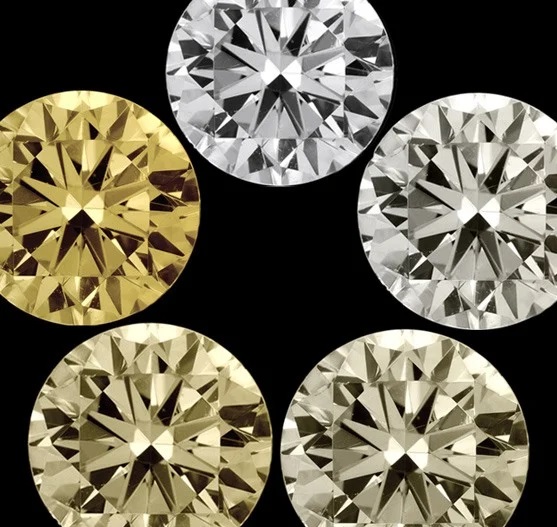
What is Diamond Colour?
Diamond colour refers to the presence or absence of colour in a diamond. While most diamonds appear colourless to the naked eye, many diamonds actually have subtle hints of colour. The Gemological Institute of America (GIA) grades diamond colour on a scale from D (colourless) to Z (light yellow or brown).
In this grading scale, diamonds graded from D to F are considered colourless, and they are highly valued for their purity and ability to reflect light without any interference from colour. As you move down the scale towards diamonds graded with letters closer to Z, the presence of yellow or brown hues becomes more noticeable.
The presence and intensity of colour in a diamond can significantly impact its value and visual appearance. Colourless diamonds are often more desirable and valuable, as they allow for more brilliance and fire. However, some fancy colour diamonds are also highly sought after for their unique and vibrant colours, such as blue, pink, and yellow.
-(1).jpg)
Does Diamond Colour Matter?
A change of two or three colour grades has a huge impact on a stone’s value: being flexible with colour often means customers can buy a bigger stone for their budget. Furthermore, well-cut stones often appear whiter than their certificate might suggest. That’s why it is important to discuss the various options with an expert. Read more on the importance of diamond cut on our Diamond Cut page.
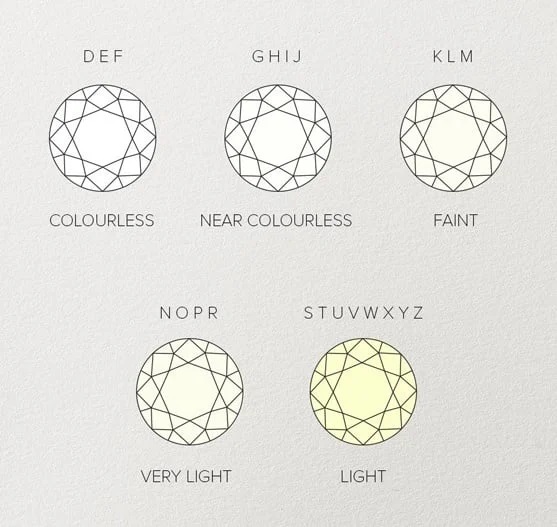
The Diamond Colour Chart
Only a tiny proportion of diamonds are composed of pure carbon – known as Type IIA. These stones are incredibly sought after and valuable.
All other diamonds contain varying degrees of nitrogen, which introduces yellow or brown tones to the stone. The GIA grades a diamond’s colour on a scale from D to Z, with D representing pure white, colourless stones and Z representing yellow-hued stones.
Each letter grade on the chart signifies a subtle shift in the diamond's colour appearance. These distinctions are often very slight and might not be readily noticeable to the untrained eye. However, these small differences can significantly impact a diamond's value, as diamonds with less colour are generally considered more valuable and desirable due to their ability to reflect light with greater brilliance.
Diamonds in the "D" to "F" range are usually referred to as colourless or near-colourless and are highly prized for their purity. Those in the "G" to "J" range might have slight hints of colour, which might become more noticeable in larger diamonds or in certain lighting conditions. Diamonds beyond "J" tend to exhibit more visible colour.
Why Does the Diamond Colour Chart Start with D?
The GIA wanted to create a standardised and objective system for evaluating diamond colour that would be universally understood and consistent across the industry.
By starting the scale at "D," (colourless), the GIA avoided any preconceived notions associated with traditional letter grading systems that began with "A" or "B." This new approach focuses on the absence of colour: a diamond with no detectable colour is of the highest quality in terms of colour purity.
Starting the scale at "D" allows for clear differentiation between diamonds with the least amount of colour, making it easier for jewellers, consumers, and professionals to understand and communicate a diamond's colour characteristics.
.jpg)
What is the Best Colour for Diamonds?
The "best" colour for a diamond depends on personal preferences and the specific qualities you value. In the context of diamond colour grading, the term "best" often refers to the colourless and near-colourless range, which includes diamonds graded from D to G on the GIA colour scale.
These diamonds are highly sought after for their ability to reflect light with minimal interference from colour, resulting in exceptional brilliance and fire.
Diamonds in the D-F range are considered colourless and are prized for their rarity and purity. They tend to be more valuable due to their high quality and lack of noticeable colour.
Diamonds in the G-H range are classified as near-colourless. While they might have a slight hint of colour when compared to the top-tier colourless diamonds, these differences are often difficult to perceive without a trained eye, especially when the diamonds are set in jewellery.
Coloured Diamonds
.jpg)
Not to be confused with diamond colour when referring to white diamonds, coloured diamonds are some of the rarest gems in the world. From vivid pink to intense blue diamonds, view our Masterpieces and see their beauty for yourself.
Fancy-coloured diamonds are a rare and captivating category of diamonds that come in a wide range of natural colours other than the traditional colourless or near-colourless variations. These colours are the result of specific mineral elements or structural irregularities present during the diamond's formation. Here are some of the different fancy colours for diamonds:
Blue Diamonds: Their blue hue comes from the presence of boron during the diamond's creation. The famous Hope Diamond is a prime example of a blue diamond.
Pink Diamonds: Pink diamonds are highly prized for their romantic and feminine appearance. The exact cause of their colour is not fully understood, but it's believed to result from intense pressure and structural anomalies during diamond formation.
Yellow Diamonds: Yellow diamonds get their colour from the presence of nitrogen atoms. The intensity of yellow can range from light to vivid.
Green Diamonds: Green diamonds acquire their colour from natural radiation exposure over time. The green hue can vary from pale to deep and intense shades.
Orange Diamonds: The precise cause of orange colouration in diamonds is not fully determined, but it's believed to result from a combination of nitrogen and structural distortions. Orange diamonds can range from light pastel to vibrant hues.
Red Diamonds: Red diamonds are among the rarest and most valuable of all fancy colours. The exact mechanism behind their red colour is not entirely understood, but it's thought to be due to the presence of a specific type of structural defect. The Moussaieff Red Diamond is one of the most famous red diamonds.
Purple Diamonds: The cause of purple colouration in diamonds is not fully known, but it's likely related to the presence of hydrogen or other trace elements. Purple diamonds can range from delicate lavender shades to deep purples.
Brown Diamonds (Champagne and Cognac): Brown diamonds, often referred to as "champagne" or "cognac" diamonds, can encompass a wide range of warm brown hues. These diamonds have gained popularity for their earthy and luxurious appearance.
Grey Diamonds: Grey diamonds can display a range of silvery grey shades. Their colouration might be influenced by the presence of hydrogen or other factors during crystal growth.
Fancy-coloured diamonds are highly valued for their rarity, uniqueness, and the intricate processes that give rise to their captivating hues. The intensity, distribution, and saturation of colour can greatly impact their value and desirability. When evaluating fancy coloured diamonds, experts consider factors such as hue, tone, saturation, and overall colour distribution.
Diamond Colour Standards at Pragnell
At Pragnell, our engagement rings feature diamonds that are graded from D to H.
Frequently Asked Questions
Below are the answers to our most commonly asked questions. Should you want to find out more please feel free to contact us and begin your Pragnell experience.
View By Category
Explore a selection of pieces from across the Pragnell range
Jewellery CLP Page
Contact us